Over the last few weeks, NBA teams have been overhauling their rosters, signing free agents, making trades, and locking up their draft picks to contracts. Prior to the draft and free agency though, several teams completed another major offseason change that shouldn’t be overlooked — over a quarter of the NBA’s clubs named a new permanent head coach.
One of the eight teams that named a new permanent coach this offseason simply retained a familiar face. Nate McMillan took over as the Hawks‘ interim coach halfway through the 2020/21 season, and the job he did the rest of the way, leading Atlanta to the Eastern Conference Finals, ensured the team wasn’t going to seek out a replacement.
The other seven teams, however, will have a new face on the sidelines to start the 2021/22. Here’s a recap of this offseason’s head coaching changes and a brief look at how they played out:
Boston Celtics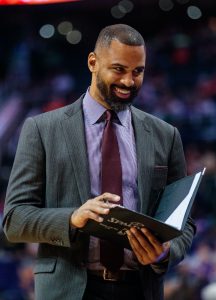
- Hired: Ime Udoka (story)
- Replaced: Brad Stevens (story)
- Contract details: Multiyear deal (specifics unknown)
- Other candidates who reportedly received consideration or interest: Jerome Allen, Chauncey Billups, Mike D’Antoni, Darvin Ham, Jay Larranaga, Charles Lee, Joe Mazzulla, Scott Morrison, Jamahl Mosley
The Celtics didn’t follow the usual script when making their head coaching change. Rather than being fired by the team, Stevens actually received a promotion to president of basketball operations, putting him in the unusual position of hiring his replacement.
Boston considered a mix of internal and external candidates before landing on Udoka, a former NBA player who was an assistant on Gregg Popovich‘s staff in San Antonio for seven years before also spending time with Philadelphia and Brooklyn. Udoka’s experience on Team USA’s staff at the 2019 World Cup worked in his favor, since he got to know Jayson Tatum, Jaylen Brown, and Marcus Smart during that event.
Dallas Mavericks
- Hired: Jason Kidd (story)
- Replaced: Rick Carlisle (story)
- Contract details: Four-year deal
- Other candidates who reportedly received consideration or interest: Jamahl Mosley, Terry Stotts
The Mavericks took another step forward in 2020/21, improving their regular season winning percentage for a third straight season. Although Dallas’ season ended with another first-round loss to the Clippers, those positive strides made it a little surprising that the team ended up making major changes to both its coaching staff and front office. Carlisle stepped down and the team parted ways with longtime president of basketball operations Donnie Nelson.
The searches for a new general manager and head coach occurred simultaneously, with owner Mark Cuban leading the process. He chose Nico Harrison to head up the team’s basketball operations department, and they quickly zeroed in on Kidd – a former All-Star and NBA champion with the Mavericks – as the choice for head coach.
The Mavs are hoping that Kidd learned from some of the mistakes he made during previous head coaching stints with the Nets and Bucks and will form a strong connection with franchise player Luka Doncic, who wasn’t always on the same page as Carlisle.
Indiana Pacers
- Hired: Rick Carlisle (story)
- Replaced: Nate Bjorkgren (story)
- Contract details: Four-year, $29MM deal
- Other candidates who reportedly received consideration or interest: Steve Clifford, Brian Shaw, Terry Stotts
The Pacers’ head coaching change in 2020 looks like one of the worst moves of that offseason in hindsight. The team dismissed Nate McMillan due to his lack of success in the playoffs, but his replacement – Bjorkgren – was unable to even get the team to the postseason during his lone season at the helm.
After Bjorkgren’s brief and disastrous tenure, the Pacers will seek stability by bringing back Carlisle, who coached the team from 2003-07 and has recorded the 15th-most wins of any coach in NBA history. He’ll assume control of a veteran squad that looks capable of bouncing back and potentially securing a top-six spot in the East with better health luck in 2021/22.
New Orleans Pelicans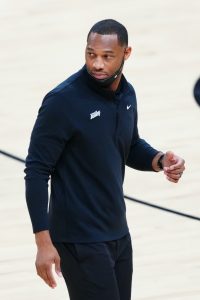
- Hired: Willie Green (story)
- Replaced: Stan Van Gundy (story)
- Contract details: Multiyear deal (specifics unknown)
- Other candidates who reportedly received consideration or interest: Charles Lee, Jacque Vaughn, Fred Vinson, Teresa Weatherspoon
Like Bjorkgren in Indiana, Van Gundy proved to be a poor fit for his new team and lasted just one year before receiving his walking papers. When the Pelicans launched a search for their new head coach, they prioritized finding a candidate capable of connecting with the young players on the roster — especially Zion Williamson, who will be playing for his third coach in three years.
New Orleans initially appeared focused on Vaughn, but the Nets assistant withdrew from consideration in order to remain in Brooklyn. At that point, the Pelicans’ search narrowed to Green and Lee, with the Suns associate head coach ultimately winning out.
Green only has five years of experience as an assistant under his belt, but appeared in the NBA Finals in four of those five seasons with Golden State and Phoenix. And the fact that he’s only six years removed from being in the NBA as a player should help earn him some respect from a young Pelicans team.
Orlando Magic
- Hired: Jamahl Mosley (story)
- Replaced: Steve Clifford (story)
- Contract details: Four-year deal
- Other candidates who reportedly received consideration or interest: Chauncey Billups, Jarron Collins, Mike D’Antoni, Willie Green, Becky Hammon, Penny Hardaway, Jason Kidd, Charles Lee, Terry Stotts, Ime Udoka, Wes Unseld Jr.
It didn’t seem as if the Magic were particularly eager to move on from Clifford, but the veteran coach wasn’t enthusiastic about embarking on another rebuild, so the two sides mutually agreed to parted ways a few weeks after Orlando’s season ended.
While some of the candidates reported to be on the Magic’s radar had previous head coaching experience, most were assistants who had a strong record of player development and wouldn’t mind growing along with a young, lottery-bound team. Orlando eventually chose Mosley, who was an assistant for the Nuggets and Cavaliers before spending the last seven seasons under Rick Carlisle in Dallas.
Portland Trail Blazers
- Hired: Chauncey Billups (story)
- Replaced: Terry Stotts (story)
- Contract details: Five-year deal
- Other candidates who reportedly received consideration or interest: Jerome Allen, Brent Barry, Mike D’Antoni, Becky Hammon, Jason Kidd, Dawn Staley
Unable to get the Trail Blazers over the hump despite a long track record of regular season success, Stotts was let go by the Blazers this spring.
After reports stated that Damian Lillard would have a voice in Portland’s hiring process, the All-Star guard expressed public support for Kidd and Billups. When Kidd withdrew his name from consideration, reportedly uncomfortable with the idea of pursuing the job following Lillard’s public endorsement, Billups emerged as the frontrunner and beat out finalists D’Antoni and Hammon for the job.
Billups, who had a decorated career as a player, has long been viewed by people around the league as a good bet to be a successful NBA coach. He’ll get his chance in Portland, though the team could’ve handled the hiring better from a PR perspective.
The Blazers, who faced some backlash due to a 1997 sexual assault case involving the former All-Star guard, told reporters they thoroughly investigated that incident and came away confident that Billups hadn’t engaged in any wrongdoing. Subsequent reporting suggested that Portland’s investigation may not have been as exhaustive as the team claimed. However, any blow-back to the poorly-handled process seems more likely to affect president of basketball operations Neil Olshey than Billups.
Washington Wizards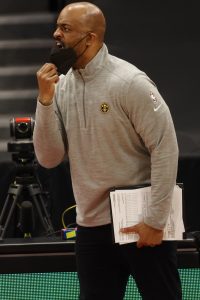
- Hired: Wes Unseld Jr. (story)
- Replaced: Scott Brooks (story)
- Contract details: Four-year deal
- Other candidates who reportedly received consideration or interest: Sam Cassell, Chris Fleming, Willie Green, Darvin Ham, Charles Lee, Jamahl Mosley, Scott Morrison, Ronald Nored, Chris Quinn, Kevin Young
Halfway through the 2020/21 season, Brooks looked like the surest bet among the NBA’s 30 head coaches to be let go at season’s end. A second-half surge and a play-in tournament victory earned the Wizards a playoff berth and made the decision a little more difficult, but the team ultimately decided not to bring back Brooks, whose contract expired this year.
The Wizards, whose search focused exclusively on assistants without prior head coaching experience, narrowed their list down to four finalists — Unseld, Ham, Lee, and Mosley. After Mosley opted to take the Orlando job, Washington chose Unseld over the two Bucks assistants.
It was a logical choice for the Wizards, who gave Unseld his start as an assistant in 2005 and who employed his father (Wes Unseld Sr.) for years as a player, coach, and front office executive. However, Unseld Jr. earned the job on merit, not sentiment — he spent 16 years as an assistant in Washington, Golden State, Orlando, and Denver, and the Nuggets lobbied hard for him to get a head coaching opportunity they felt he deserved.
 Golden State Warriors:
Golden State Warriors: 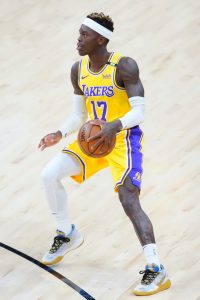 Boston Celtics
Boston Celtics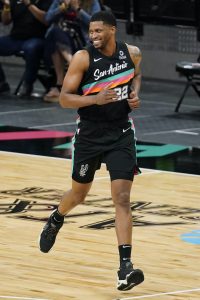 Utah Jazz
Utah Jazz